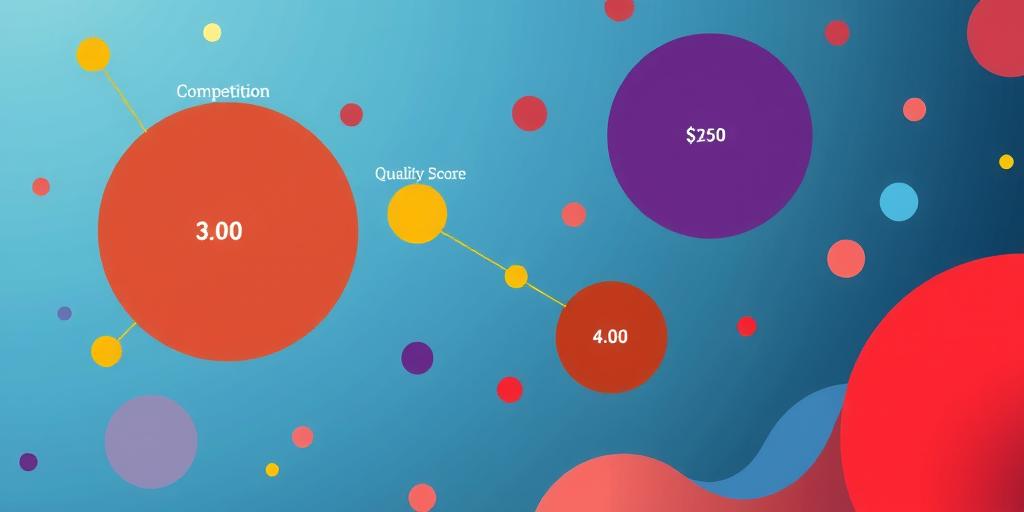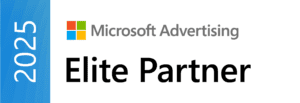Table of Contents
- Cost Structure Overview of Google Ads
- Average Google Ads Costs in 2025
- Key Factors Influencing Google Ads Costs
- Projected Trends for Google Ads in 2025
- Budgeting Strategies for Google Ads
- Understanding Return on Investment for Google Ads
- Best Practices for Google Ads in 2025
- Adapting to Changes in Google Ads Costs
- Frequently Asked Questions
9.1. What factors can affect the cost of running Google Ads in 2025?
9.2. How can I improve my Google Ads performance without increasing my budget?
9.3. What type of businesses benefit most from using Google Ads?
9.4. What are some common mistakes to avoid when setting up Google Ads campaigns?
9.5. Is it worth investing in Google Ads if my business is new?
In 2025, understanding the costs of Google Ads is vital for businesses looking to succeed in digital marketing. The platform relies on a pay-per-click model, meaning advertisers spend money whenever a user clicks their ad. Average costs typically fall between $1 and $2 per click on the Search Network and even lower for Display ads. Competition can heavily influence these prices; for instance, industries like insurance may see CPCs soar over $50. As AI tools improve campaign efficiency, companies must remain adaptable with their budgets and focus on creating quality content to maximize return on investment. Staying informed is key!
1. Cost Structure Overview of Google Ads

Google Ads operates primarily on a pay-per-click (PPC) model, meaning advertisers pay each time someone clicks on their ad. This model is straightforward but can lead to a wide range of costs depending on various factors. For instance, the average cost-per-click (CPC) on the Search Network typically falls between $1 and $2, while the Display Network can offer CPCs as low as $0.50. However, these averages can be deceptive as actual costs vary significantly based on industry competition, targeting options, and overall ad quality. In highly competitive industries like insurance or legal services, CPCs can soar beyond $50. Additionally, refined targeting strategies often lead to increased costs due to heightened competition for specific audiences. One critical aspect that can lower costs is the Quality Score, which rewards ads that are more relevant and engaging, ultimately resulting in a more cost-effective ad spend.
2. Average Google Ads Costs in 2025

In 2025, the average costs of Google Ads are likely to reflect a mix of trends shaped by industry dynamics and technological advancements. The typical cost-per-click (CPC) on the Search Network is projected to range between $1 and $2, while those utilizing the Display Network may pay as little as $0.50 per click. However, businesses in highly competitive sectors, such as insurance or legal services, could face CPC rates soaring above $50. This disparity highlights the importance of understanding your specific industry landscape.
Targeting strategies will also play a significant role in determining costs. More precise targeting options may lead to increased competition, thus raising CPC. For instance, if you’re targeting niche audiences or specific demographics, you might find yourself paying a premium for those valuable clicks. Additionally, the Quality Score of your ads—assessing their relevance and user experience—can significantly influence how much you pay. Higher Quality Scores often translate to lower costs per click, emphasizing the need for quality ad content and landing pages.
As we look towards 2025, businesses should prepare for a potential increase in overall advertising costs driven by inflation and heightened competition in the digital space. Moreover, the introduction of new ad formats, such as video and shoppable ads, could alter the spending landscape, encouraging brands to innovate and adapt their advertising strategies.
| Industry | Average CPC (2025) |
|---|---|
| Search Network | $1 – $2 |
| Display Network | $0.50 or lower |
| Highly Competitive Sectors | $50 and above |
3. Key Factors Influencing Google Ads Costs
Several key factors play a significant role in determining the costs of Google Ads in 2025. One of the most impactful is industry competition. In highly competitive fields like insurance or legal services, the cost-per-click (CPC) can skyrocket, sometimes exceeding $50 per click. This is because many businesses are vying for the same keywords, driving up costs.
Another crucial factor is the targeting options you choose. More refined targeting—such as demographics, interests, or specific geographic areas—can lead to higher costs due to intensified competition for those particular audiences. For example, targeting a niche audience might yield higher CPCs compared to broader targeting options, as fewer advertisers compete for that specific group.
Quality Score also significantly affects costs. Ads that are relevant and well-constructed typically enjoy lower CPCs. Google rewards advertisers who create high-quality ads that users find helpful and engaging. Therefore, focusing on improving your ads’ relevance can lead to cost savings over time.
Lastly, the rise of AI and machine learning in managing campaigns is expected to influence costs in 2025. These technologies could enable more efficient spending, potentially affecting overall ad costs. However, as automation becomes more prevalent, increased competition for ad space may lead to higher CPCs. Understanding these factors is essential for businesses looking to navigate the evolving landscape of Google Ads effectively.
- Competition level in your industry
- Quality Score of your ads
- Geographic targeting options
- Seasonal trends and events
- Bidding strategy and budget allocation
- Ad relevance and landing page experience
- Performance metrics and historical data
4. Projected Trends for Google Ads in 2025
As we look towards 2025, several trends are shaping the landscape of Google Ads costs. One significant development is the increasing use of artificial intelligence (AI) in campaign management. AI tools can analyze vast amounts of data quickly, enabling advertisers to optimize their spending more effectively. For instance, automated bidding strategies may help businesses get more clicks for their budgets, targeting the right audience without overspending.
However, with the rise of digital advertising, we can expect costs to increase as well. Inflation and heightened competition in various industries are likely to drive up cost-per-click (CPC). For example, sectors like e-commerce and tech could see CPCs rise due to more businesses vying for visibility.
Additionally, Google is anticipated to introduce new ad formats and placements. Expect to see more emphasis on video ads and interactive content, which could change how budgets are allocated. Businesses may need to invest more in these new formats to stay competitive, leading to a shift in overall ad spending priorities.
Overall, keeping an eye on these projected trends will be essential for businesses looking to navigate the evolving Google Ads ecosystem in 2025.
5. Budgeting Strategies for Google Ads
When it comes to budgeting for Google Ads in 2025, a flexible approach is essential. Start by determining your overall marketing budget and then assign a portion to Google Ads based on your business goals and previous performance. It’s wise to begin with a test budget, perhaps around $500 to $1,000, to experiment with different campaigns and see what resonates with your audience. Monitor results closely during this phase to identify which keywords and ad formats yield the best return.
Once you have a clearer picture of what works, you can scale your budget accordingly. For example, if a particular campaign generates a high conversion rate, consider increasing its budget to capitalize on its success. Additionally, setting aside a portion of your budget for seasonal promotions or unexpected opportunities can help you stay competitive.
Utilizing automated tools to manage your bids can also help optimize spending. Google’s machine learning algorithms can adjust your bids based on performance, potentially leading to lower costs per click while maximizing your reach. Ultimately, regular analysis of your ad performance and making data-driven adjustments will help you maintain a budget that aligns with your business objectives.
6. Understanding Return on Investment for Google Ads
Return on Investment (ROI) is a crucial metric for evaluating the effectiveness of Google Ads campaigns. In 2025, businesses are likely to see varying ROI depending on their industry and how well they optimize their campaigns. Reports show that companies can achieve returns ranging from 200% to 400% on their ad spend. For instance, a retail business that invests $1,000 in Google Ads might generate $3,000 in sales, reflecting a 300% return.
To maximize ROI, continuous optimization is essential. This includes regularly analyzing campaign performance, adjusting ad placements, refining targeting options, and enhancing ad quality. Tools like Google Analytics and Google Ads’ built-in reporting features can provide insights into which ads are performing well and which need improvement.
Moreover, businesses should consider the customer lifetime value (CLV) when calculating their ROI. For example, if a company spends $500 on ads to acquire a customer who eventually spends $2,000 over several purchases, the initial investment is justified, leading to a favorable long-term ROI.
Ultimately, achieving a strong ROI from Google Ads requires a strategic approach, focusing on both immediate results and long-term customer engagement.
7. Best Practices for Google Ads in 2025
To get the most out of your Google Ads campaigns in 2025, it’s crucial to adopt effective strategies. Start by utilizing automated bidding strategies, which help you maximize performance while staying within your budget. These tools can analyze data in real-time, allowing for smarter spending and targeted results.
Creating high-quality ad content and optimized landing pages is another key to success. A well-crafted ad that resonates with your audience will not only improve click-through rates but also enhance your Quality Score, leading to lower costs.
Regular analysis of your ad performance is essential. Monitor metrics such as click-through rates, conversion rates, and overall ROI. Based on this data, make necessary adjustments to your campaigns. For instance, if certain keywords are underperforming, consider reallocating your budget to better-performing ones or testing new ad creatives.
Consider implementing remarketing strategies to re-engage users who have previously shown interest in your products or services. This can significantly boost conversion rates by targeting an audience that is already familiar with your brand.
Lastly, stay updated on the latest trends and changes in Google Ads. The platform is continually evolving, and being informed will help you adapt your strategies effectively.
8. Adapting to Changes in Google Ads Costs
Adapting to changes in Google Ads costs requires a proactive approach. With the anticipated rise in cost-per-click (CPC) and evolving competition, businesses will need to stay agile. For instance, if a company notices an increase in CPC within their sector, it may need to reassess its bidding strategy or explore alternative targeting options. Understanding the nuances of audience behavior can also inform better spending decisions.
Another key aspect is leveraging data analytics. By continuously analyzing performance metrics, businesses can identify which ads yield the best returns and allocate budgets accordingly. For example, if a specific keyword consistently drives sales, it would be wise to invest more in that area, even if it means adjusting other campaigns.
Moreover, as new ad formats emerge, businesses should be willing to experiment. This could involve testing video ads or interactive formats that might resonate better with target audiences. Staying informed about trends and advancements in Google Ads will enable companies to pivot quickly and take advantage of new opportunities. In this dynamic landscape, flexibility and innovation are critical to maintaining a competitive edge.
Frequently Asked Questions
1. What factors can affect the cost of running Google Ads in 2025?
The cost of Google Ads can vary based on factors like competition in your industry, the keywords you choose, your ad quality, and your target audience. If more businesses are bidding for the same keywords, costs can go up.
2. How can I improve my Google Ads performance without increasing my budget?
You can boost your Google Ads performance by improving your ad quality and targeting. Use relevant keywords, write engaging ads, and focus on targeting the right audience to get better results without necessarily spending more.
3. What type of businesses benefit most from using Google Ads?
Google Ads can be beneficial for almost any business, but especially those that are local, service-oriented, or have niche products. It helps drive immediate traffic and can lead to faster customer acquisition.
4. What are some common mistakes to avoid when setting up Google Ads campaigns?
Common mistakes include not researching keywords thoroughly, ignoring mobile users, setting unrealistic goals, and not tracking performance data. These can lead to wasted budget and ineffective campaigns.
5. Is it worth investing in Google Ads if my business is new?
Yes, Google Ads can be a great option for new businesses. It helps to quickly gain visibility and attract customers, but it’s important to manage your campaigns wisely and continuously optimize them for the best results.
TL;DR In 2025, Google Ads will continue to operate on a pay-per-click model with average costs ranging from $1 to $2 per click in the Search Network and as low as $0.50 in the Display Network. Key factors influencing costs include industry competition, targeting options, and Quality Score, with competitive industries potentially exceeding $50 per click. Trends suggest increased adoption of AI for campaign management and a rise in costs due to inflation and competition. Businesses should adopt flexible budgeting strategies and focus on optimizing ROI, which can range from 200% to 400%. Staying informed and adapting strategies will be crucial for success.



